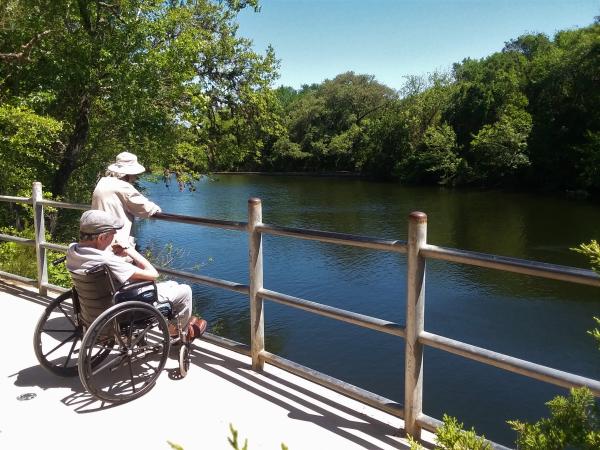Landscape Architecture Alumnus’ Blue Index Investigates Relationship Between Waterscapes and Mental Wellbeing

As we’ve sheltered in place for months in response to the spread of COVID-19, many Austinites have looked to Austin’s greenspaces and waterways for an emotional reprieve. Well before the pandemic, landscape architecture alumnus Kevin Jeffery (MLA ’19) has been studying the effect of water on people’s emotional well-being via Blue Index – a research project he launched during his time as a student at UTSOA.
Initially designed to study people’s emotional reactions to water, Blue Index has since evolved into a digital assessment tool and mechanism that allows municipalities to collect immediate on-site impressions of people’s experiences with different types of waterways – revealing which local waterscapes people most value and why in order to guide public investments in protecting, restoring, and increasing equitable access to these resources. The Blue Index pilot project was conducted here in Austin, Texas over an 18-month period. Kevin had planned to present his insights and results to the City of Austin’s Environmental Commission this past May, but will now wait for a safe time in the future to do so.
During the pilot period, Blue Index collected nearly 2,000 on-site impressions of people’s experiences with creeks, ponds, and wetlands across the city of Austin through network of 34 photo stations put in place along 17 different watersheds. Participants submitted photos and completed an online assessment to collect data about their emotional response and experience of the space.
From there, Kevin developed a system of delineating the waterscapes that have the most positive and negative effect on a person’s wellbeing. Four factors were singled out as the most encompassing indicators of human wellbeing related to waterscapes – Impression, Cleanliness, Relaxation and Emotion. Together, these factors create the Blue Index Score, which can be used for city planning, advocacy and water management purposes.
Moving forward, Kevin hopes the results of Blue Index will be used by the Austin Watershed Protection Department and water advocates to develop a stronger water quality narrative criteria for assessing outdoor spaces and clean water management practices. As the research grows, Kevin anticipates that a common set of design, management, and policy principles will emerge to help communities make better decisions on where to invest resources to provide equitable, widespread access to the benefits of being near water.
For more information, check out the Blue Index Executive Summary Report here.

